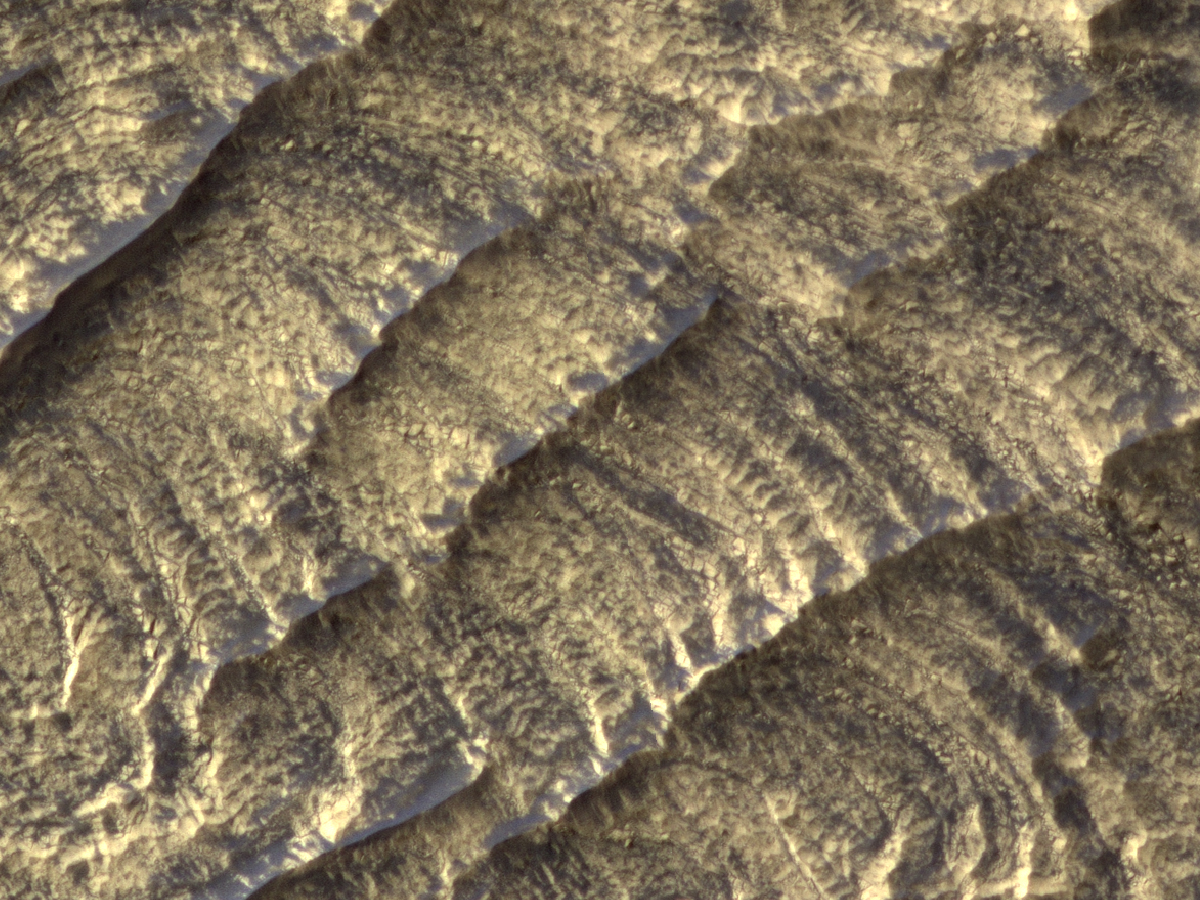Enigma

Stretched out
June 6, 2012
Generations of erosion
June 18, 2012 A piece of Mars: Here is an example of an aeolian enigma. Dunes are depositional, meaning they are made of stuff that piles up on a surface. But these dunes show the strata of the underlying rock within them, which means these things were made from erosion of this rock. So we don’t really know how they form, although a few ideas have been kicked around. (HiRISE PSP_008313_1730)
A piece of Mars: Here is an example of an aeolian enigma. Dunes are depositional, meaning they are made of stuff that piles up on a surface. But these dunes show the strata of the underlying rock within them, which means these things were made from erosion of this rock. So we don’t really know how they form, although a few ideas have been kicked around. (HiRISE PSP_008313_1730)




3 Comments
Could these be Monadnocks (erosional features) instead of dunes ?
Note, by the way, that this is a relatively recently altered surface. Perusal of the original HiRise image shows few apparent new craters, but a number of palimpsests
Monadnocks, or inselbergs, are isolated hills that are erosional remnants. These are probably erosional remnants, too, but they’re not as big as typical inselbergs, and they’re not isolated. There are fields and fields of these things, and they’re typically 10-30 m wide and perhaps a few meters in height.
Most aeolian surfaces on Mars have fairly young surfaces. That doesn’t mean these features are young, though — they could have been buried and recently exhumed, or perhaps they’re actively forming.
What do you mean by palimpsest? It’s an ambiguous term.
A palimpsest is a document that has been erased and then re-written on. (The original writing may still be seen, if you look hard enough.) The term is used for craters that have been partially or almost entirely erased, by later impacts or (in more common usage) by erosion or even by viscous relaxation of the surface. The point is (here) that few or no fresh craters mean a young surface – as you imply, palimpsest craters could be very old, buried, and only recently exhumed. (This is the case for I believe all of the large craters on the Canadian shield.)
Looking at the full HiRise image shows that the dunes go from the light and dark terrain shown here to fully light terrain, so I don’t think that my original idea that the dark terrain was resistant to erosion can be the answer.